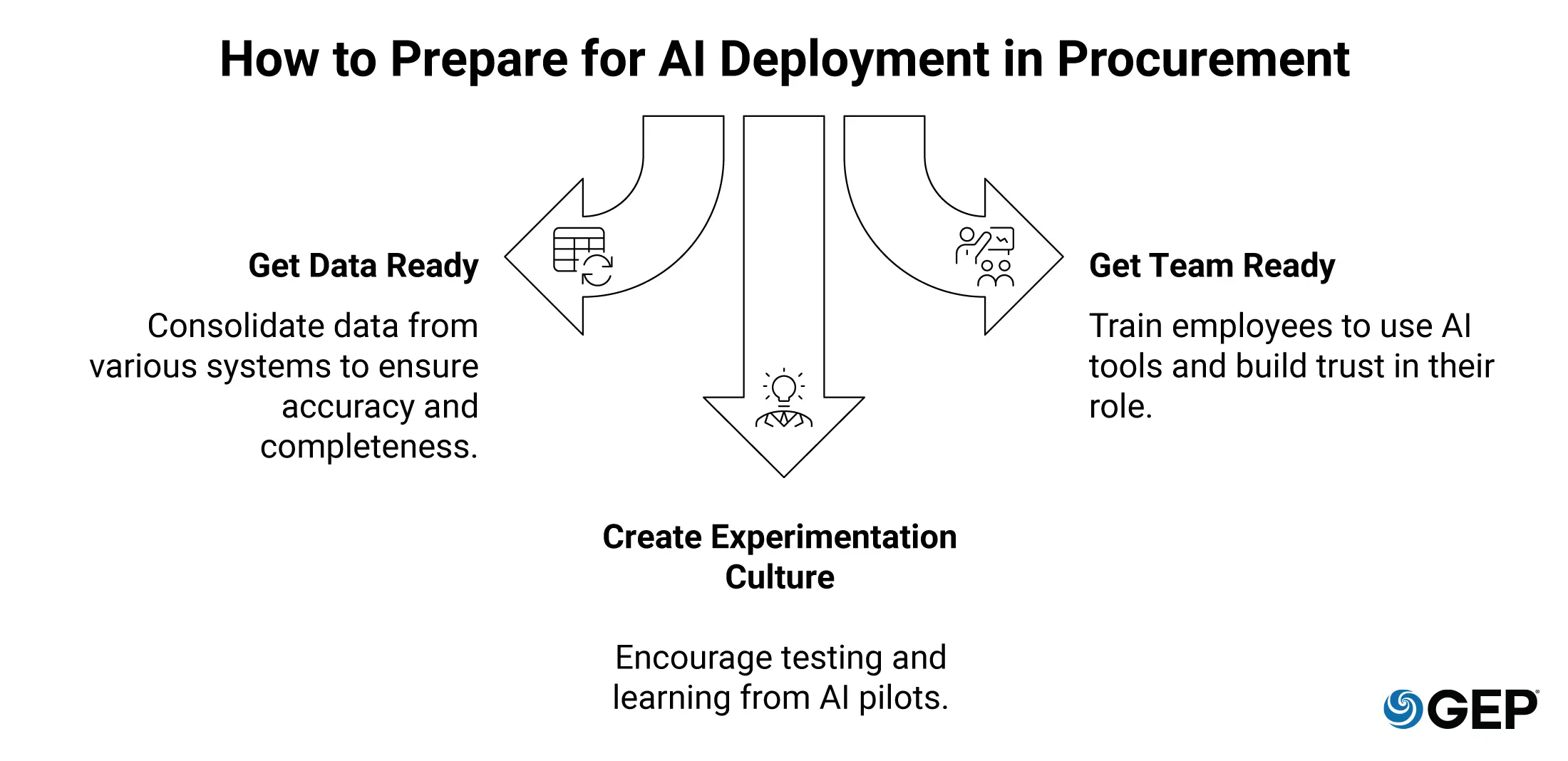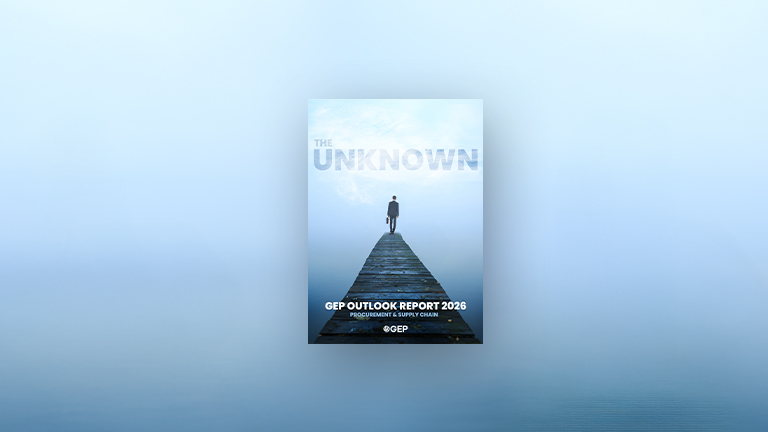
Plan to Deploy AI in Procurement? Do These 3 Things First
- Many procurement and supply chain teams are looking to deploy AI in routine operations.
- They must get their data and teams ready to embrace a new style of working alongside AI tools.
- They must not be afraid to experiment with AI tools.
November 07, 2025 | Procurement Software 3 minutes read
If you work in procurement or supply chain, chances are you already have introduced AI. At least in some parts of daily operations.
Maybe you use AI to evaluate and shortlist suppliers. You may also be using it for negotiations, contract drafting and creation, or even supplier performance management. Or you may have deployed it back office in accounts payable to get rid of paper invoices and accelerate vendor payment.
You are certainly going on the right track if you have started leveraging AI in routine operations.
But some of you may still be working with manual processes. Paper-based requisitions, purchase orders, contracts, invoices. All this takes up a lot of your daily time.
Here’s a word of caution. If you continue to work this way, you will lose out to competition. Manual, time-consuming processes can wipe out your business. In case there is a supply chain disruption, you really won’t know what to do.
As the economic environment continues to be uncertain, you must take immediate steps to safeguard your business. The first step you should take is AI.
What To Do To Get AI-Ready
You have decided to deploy AI in procurement. But where do you start?
1. Get Your Data Ready
In many businesses, data remains scattered across disconnected systems. Before deploying AI, they must get all their data in order.
Procurement data often sits in different systems. A lot of data comes from internal requisitions, suppliers and the external market. Bringing all this data together may seem to be a daunting task. But this is a vital first step.
Sopan Shah, senior vice president and global chief procurement officer for IHG Hotels & Resorts says they are using AI to cleanse, connect, and consolidate data across disparate systems. This helps them to have a more robust view of their suppliers and supply chain, he says in this Harvard Business Review report.
2. Get Your Team Ready
Once you get your data in order, the next step, and perhaps more important, is to prepare the workforce. This can be a broad program aimed at changing the mindset of people and reimagining their work with AI. Begin by assuring employees that AI tools are meant to assist (and not replace) them in daily operations.
To train the workforce, some organizations are providing access to AI tools for hands-on learning, while some are running AI pilot programs.
Some companies like IHG are using a “train the trainer” model. Employees who have piloted and tested the tools then train colleagues on using technology and show how it helps with specific use cases. This helps to build trust and allows people to learn technology with ease, says Shah.
3. Create a Culture of Experimentation
Everest Group’s data suggests that roughly 70% of the AI pilots from last year didn’t make it into production. As companies are trying a lot of different things, some aren’t likely to work. But it’s important to continue with experimentation.
Jan Olesen of Indorama Ventures believes that creating an AI experimentation culture is a best practice for CPOs. IHG has created a “procurement garage,” which allows its employees to test and learn the new technology before implementing it across the organization.
Explore 101 AI Use Cases
Real-world use cases that show how AI is transforming every stage of procurement
Why You Must Start Now
AI is set to radically alter procurement and supply chain operations. From sourcing and supplier selection to contract management, spend analysis and demand forecasting, AI’s use cases are changing how procurement has traditionally operated.
If you haven’t yet started using AI, you must do it now, especially as the technology continues to evolve quickly. In this endeavor, you may look for a technology partner who understands your operations and key objectives.
Discover GEP’s AI-Powered Procurement Software Solution




